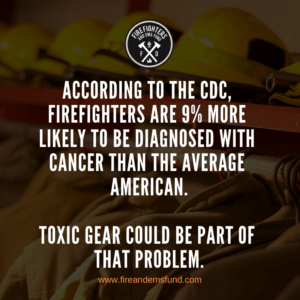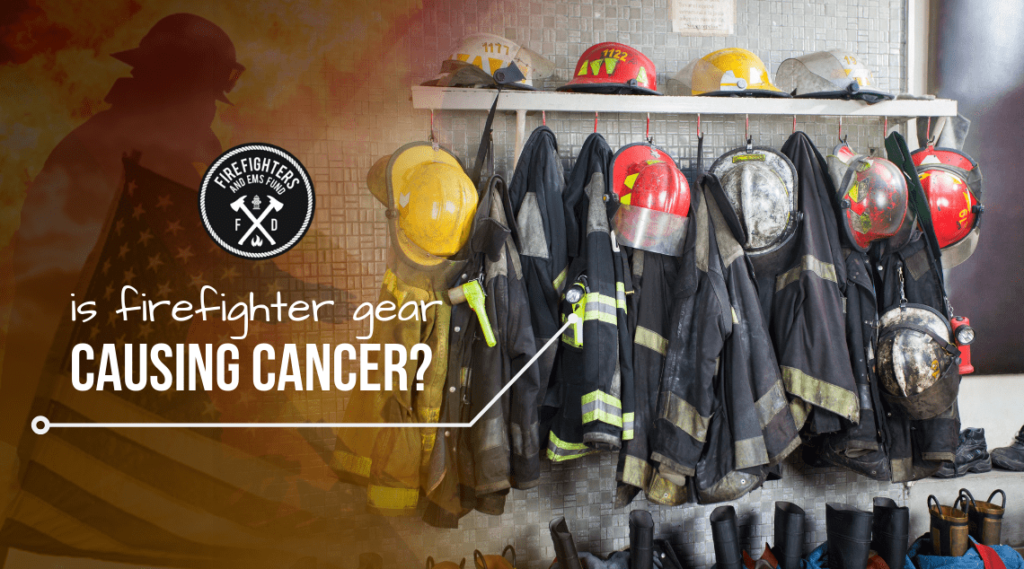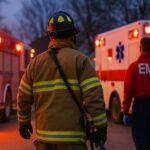Firefighters are some of the bravest men and women on the planet. Their job each day is to be ready and available to rescue people and extinguish fires that threaten people, property, and the environment. In order to do this great work, it’s important that firefighters have the proper equipment necessary to keep them safe from the smoke, heat, and flames. However, it’s possible that their gear is actually harming their health.
Is outdated, ineffective, or faulty firefighter gear causing cancer? The answer might surprise you.
Despite the obstacles and battles that these heroes face on the job, cancer might actually be their greatest threat. Both the Cancer Support Network and International Association of Firefighters have come out and said that cancer is actually the number one cause of death among firefighters. According to the CDC and NIOSH, firefighters are 9% more likely to be diagnosed with cancer than the average American.
Being aware of how this is happening and what could be increasing their risk of cancer is very important so departments across the country can start taking further action to protect their men and women.
Why is Firefighter Gear Dangerous?

When firefighters are called to a scene, they are covered from head to toe in protective gear, fully prepared for any situation. However, recent studies have shown that firefighters are at an increased risk of cancer compared to the normal population. So, is this protective gear not so protective after all?
While firefighter gear does provide protection from smoke, heat, and flames during a firefight, toxic chemicals are still finding a way to reach the firefighters to cause cancer. How is this happening?
Firefighters can be exposed during the fire; however, it might be what happens afterward that is causing the most harm.
Once the fire is put out, firefighters often remove their helmet, breathing apparatus, and gear that protects their breathing, lungs, and some of their skin during the situation. Unfortunately, this could be a deadly habit. Especially on hotter days, firefighters remove part of their gear before they clean up the scene, jump into the truck and head back to the station. Once they are at the station, they remove the rest of their gear, wash it, hang it up, and continue with their day.
While the firefighter’s body was protected from the harmful elements during the fire, their gear was also exposed which caused chemicals and carcinogens to soak in. As soon as the firefighter removes the gear that protects their breathing and skin, they are exposing those parts of their bodies to the chemicals and carcinogens that are still sitting on their gear.
They are then inhaling harmful toxins and rubbing them against their skin, carrying them into the trucks and eventually back to the station.
In addition to chemicals coming from the fires, recent tests have shown that the chemicals being used on the gear could also be causing harm to firefighter’s health. Some gear has tested positive for toxic chemicals like Bromine. This is a serious problem that needs to be addressed.
A Proactive Approach to Protecting Firefighters from Cancer
Fire departments need to take action and be more proactive in preventing cancer and reducing carcinogen exposure. In addition to demanding safer equipment from suppliers, departments across the country need to take further action to properly train and protect their firefighters. In fact, some departments are already taking action.
The Omaha fire department requires its firefighters to wear a breathing apparatus throughout the entire scene. It is also investing in more protective equipment. For example, 22 of their 24 stations, have a ”vent system that collects the heat and exhaust so that firefighters aren’t exposed to toxic fumes”. The department is also working on getting each of its firefighters a complete second set of gear.
Bernalillo County Firefighters in New Mexico are implementing a clean cab concept for their fire trucks. After a fire, their gear will be stored in a separate area of the truck for the trip back to the station. Having a separate cab area will reduce chemicals in the cab and reduce firefighter exposure to harmful chemicals.
Firefighters are ready to put their lives on the line each day for the public, but toxic gear and lack of training might be the greatest threat to their health. We look forward to seeing more fire departments across the country taking proactive action to protect their workers.
Care about firefighter gear causing cancer and the health and safety of Firefighters and EMTs? Read other articles from our Firefighter health series.








